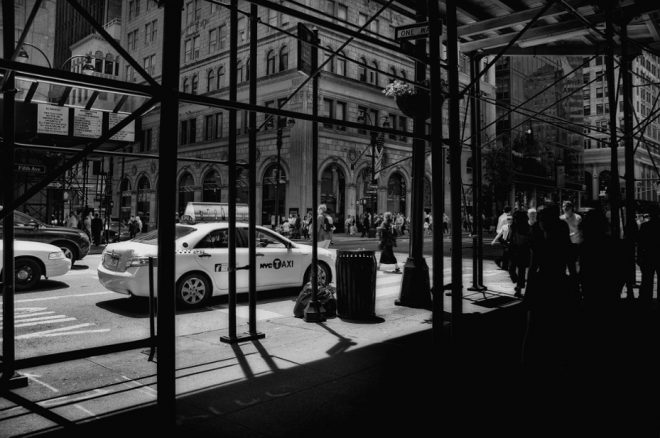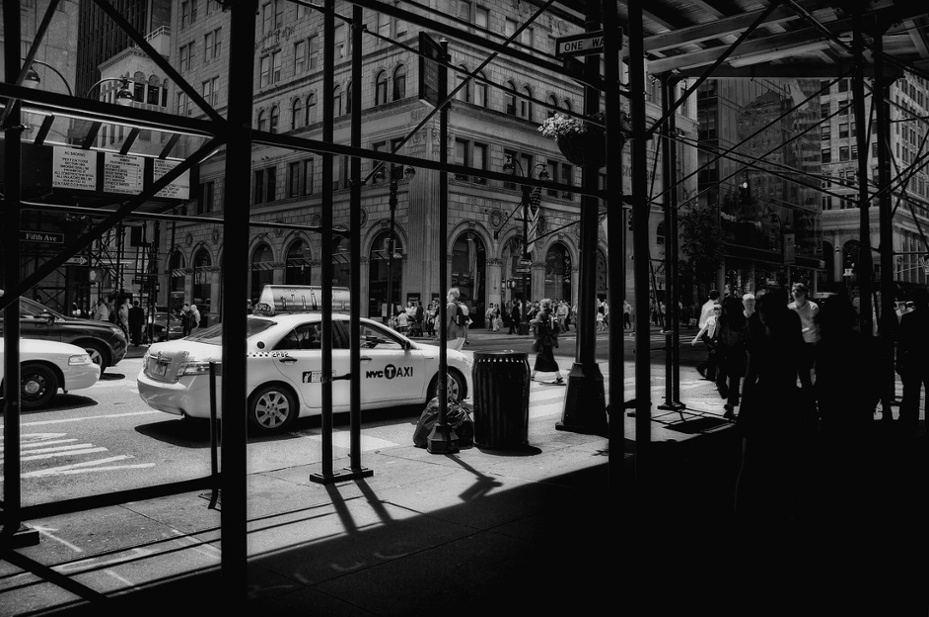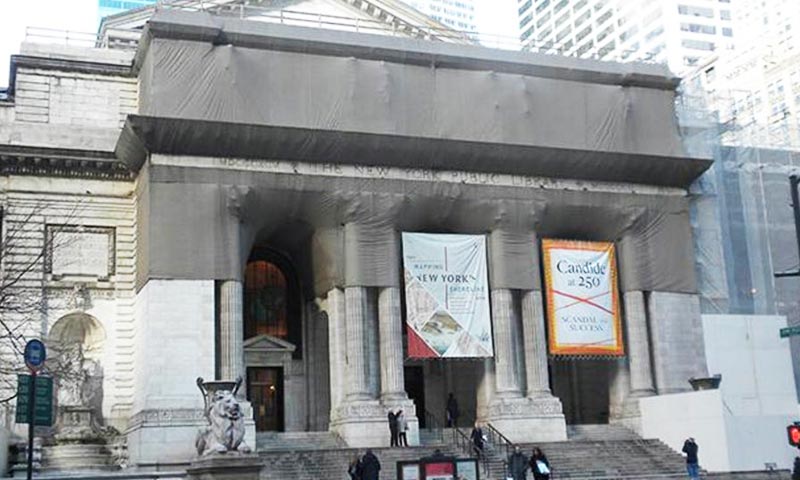
It’s a huge problem in New York City! Dark, unsightly, restrictive and even dangerous steel and wood debris scaffolding, aka “sidewalk sheds,” are plaguing entire city blocks throughout Manhattan. These steel tube structures with wood-plank roofing are constructed to protect pedestrians from falling objects and debris around building exteriors amiss of building codes or under renovation. In many cases, especially in New York, they can linger for years and present a host of serious problems for local businesses, residents, tourists and passersby. Unintended consequences can even include providing darkness and cover for crime, which is well known to occur.

These dark monstrosities were never intended to be semi-permanent Band-Aids to construction code issues but rather temporary sidewalk & street protection while renovations brought building façades and exteriors up to stringent NYC Construction Codes.
The priority on public safety, which is the right one, has its roots in a 1979 tragedy when a 17 year old college student was fatally killed by falling masonry right on Broadway. Within about a year, NYC lawmakers enacted laws requiring façade inspection on buildings higher than six stories by building owners every 5 years. Sidewalk sheds (or some other safe façade containment structure) are required to be built to catch potential falling debris and remain in place until safety officials approve of required repairs. All this has given rise to an estimated $1 billion per year façade safety scaffolding industry in New York City alone! Some of these structures have lingered and scarred the street level cityscape for over 25 years! There is an estimated 190 miles of them in NY alone.
There has to be a better way!
An anonymous crainsnewyork.com subscriber responded succinctly to a December 6, 2016 article about the issue. “I believe the sheds have caused more problems than they have prevented by lowering neighboring property values, driving small retail businesses out, facilitating muggings and 2nd floor break-ins…” One can clearly understand all the outcry by tenants in these affected neighborhoods.
Enter New York City Council Member, Ben Kallos. This man is asking the right question: How can the city ensure that sidewalk sheds are not in place any longer than necessary? He has put forth legislation that could go a long way toward battling the sidewalk shed blight. According to Kallos’ December 6, 2016 press release, his legislation would “set the following timeline for sidewalk sheds in place for dangerous conditions:
- 90 days for building owners to fix a dangerous condition,
- 90 additional for building owners days to fix the dangerous condition upon extension,
- After 180 days, the city would do the work to correct the dangerous condition and bill the owner for all costs.
- Work could not be interrupted for more than 7 days without a mandate to take down the sidewalk shed or face heavy penalties.”
One simple and immediately feasible solution to the problem Councilman Kallos has finally addressed is to replace sidewalk sheds with Façade Containment Nets wherever possible. These are highly durable and minimally intrusive containment nets engineered to safely and securely wrap building exteriors deemed at issue because of potential falling debris.
The Need for Netting
Switching from scaffolding to containment netting systems can be a fast, cost-effective replacement solution that keeps sidewalks and business entrances open and clear for tourists, tenants and customers.

Aesthetically, façade netting is sleek and binds snugly to the building, keeping visually intact the lines and contours of the architecture. One landmark building successfully using containment netting is the New York Public Library. As you can see from the photograph above, there is no obstruction of any kind surrounding the entrance and beautiful first story architecture.
Many cities in addition to New York have stringent inspection regulations, including Chicago, Boston, Philadelphia, Pittsburgh, St. Louis and Detroit. There is an informative ASTM publication called Standard Practice for Periodic Inspection of Building Facades for Unsafe Conditions (ASTM E2270-14), which gives a good overview of the issues and inspection process. Another ASTM publication, “Building Façade Maintenance, Repair, and Inspection” (ASTM STP1444) contains expert information about identifying the many issues involved with aging and historic structures. Check your local building codes and regulations for current information.
Pucuda Leading Edge has been designing and manufacturing Façade Containment Netting for over 25 years and we’re always happy to answer your questions about construction safety and containment netting systems. To learn more, please visit our Façade Containment page or call 800-241-7330. You can also contact us online to speak to a netting specialist.








